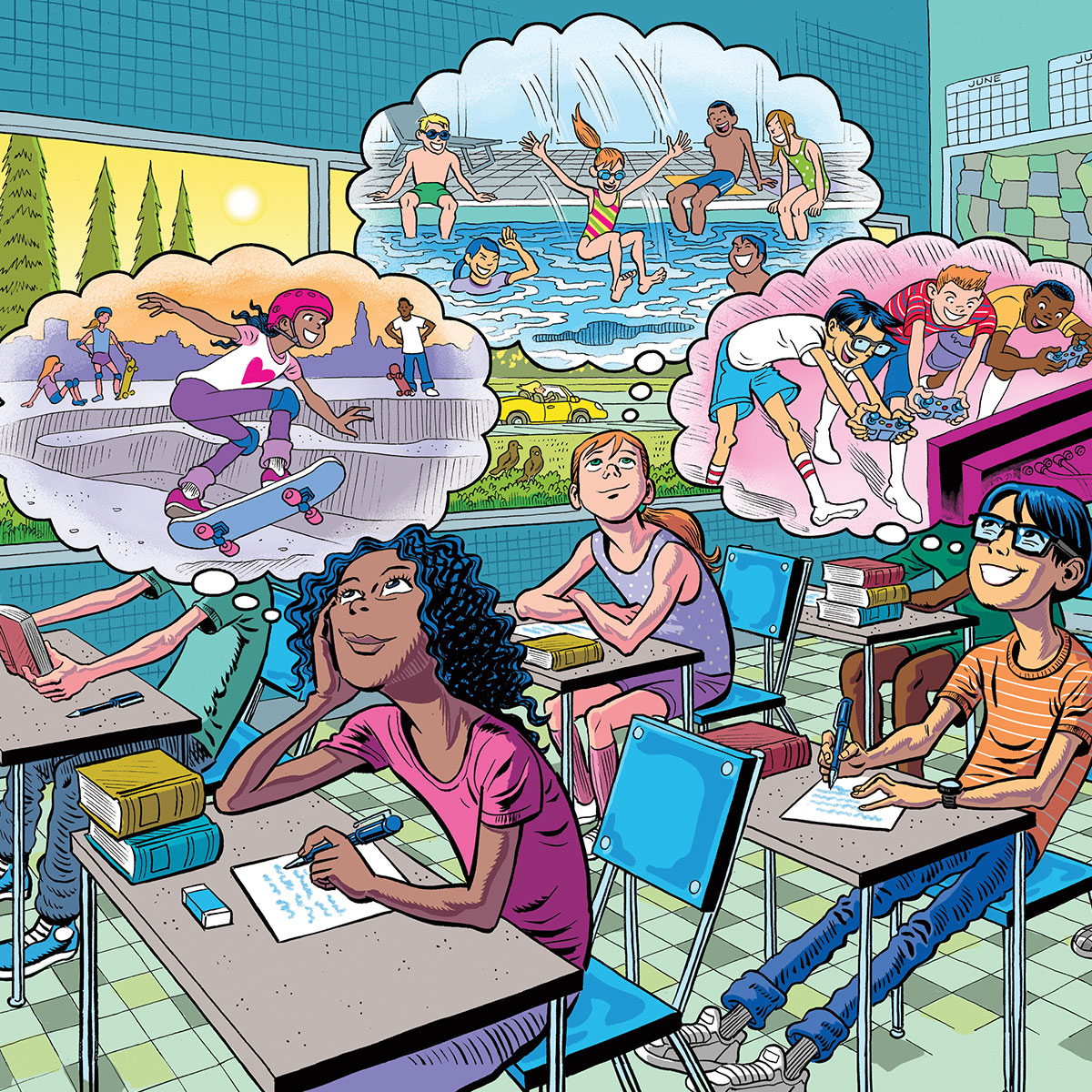Summer is still a couple of months away, but many American kids are already daydreaming about how they’ll spend their break: playing sports, visiting relatives, or just relaxing outside. Not all kids, however. About 5 million U.S. students attend year-round public schools—and they’ll be spending most of the summer in class.
That idea might send chills down your spine. Yet an estimated 3,000 schools nationwide now run on a year-round schedule. That means that instead of taking one long summer vacation, students have multiple breaks of three or four weeks throughout the year.
Some educators and parents think spending months away from the classroom is bad for students. They say kids tend to forget what they learned over the long summer break—and that it can take weeks in the fall to get them back on track.
Critics, however, point out that year-round schools don’t add any real teaching time and produce little—if any—improvement in students’ test scores. And the schedules can complicate child care and vacations for many families. At the same time, kids miss out on important summertime benefits, such as going to camp or spending time with friends and family.
Should students go to school year-round? Two experts weigh in.


